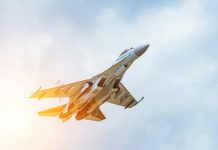
Researchers at Cardiff University have found that underwater microphones, known as hydrophones, might be key to locating airplanes like MH370 when they crash into the ocean.
Their study analyzed over 100 hours of data from hydrophones after 10 past airplane crashes and one submarine disappearance.
This research, published in Scientific Reports, comes a decade after MH370 vanished.
It suggests that the unique sounds produced by violent impacts in the ocean, such as airplane crashes, can travel long distances and be recorded by hydrophones on the seabed.
Dr. Usama Kadri, a mathematician at Cardiff University, explained, “We detected clear signals from past airplane crashes on hydrophones, even from more than 3,000 km away.
For MH370, it was concluded that the plane crashed near the 7th arc, the last communication point with INMERSAT.
More analysis and research are needed to understand these signals and their implications for MH370’s disappearance.”
The study recommends conducting field experiments with controlled explosions or airguns along the 7th arc, while monitoring the signals received at hydroacoustic stations.
These experiments, with energy levels similar to MH370’s impact, could provide insights into the location of the missing plane and improve the use of hydroacoustic technology for future searches.
Dr. Kadri pointed out that similar experiments were conducted during the search for the ARA San Juan submarine, which vanished off the coast of Argentina in 2017.
“These exercises are feasible and could help determine if the signals we observed are related to MH370 before starting another extensive search,” he said.
“If the signals are related, it could narrow down the aircraft’s location significantly. If not, authorities might need to reassess their search efforts.”
MH370 disappeared on March 8, 2014, while flying from Kuala Lumpur to Beijing. Despite a massive international search, the aircraft’s location and the fate of its 239 passengers and crew remain unknown.
The Cardiff research focused on hydrophone data from the final part of MH370’s journey in the Southern Indian Ocean, searching for signals near the 7th arc, as per official search recommendations.
They also analyzed data from the Gulf of Thailand, where the last communication occurred, to check for unusual signals.
“The disappearance of MH370 inspired this work because it raised questions about detecting airplane crashes in the ocean and using hydroacoustic technology for search and rescue,” Dr. Kadri said.
“Although we haven’t found a definite signal to restart the search for MH370, if authorities follow our recommendations, we might shed light on the aircraft’s location.”
Source: Cardiff University.



